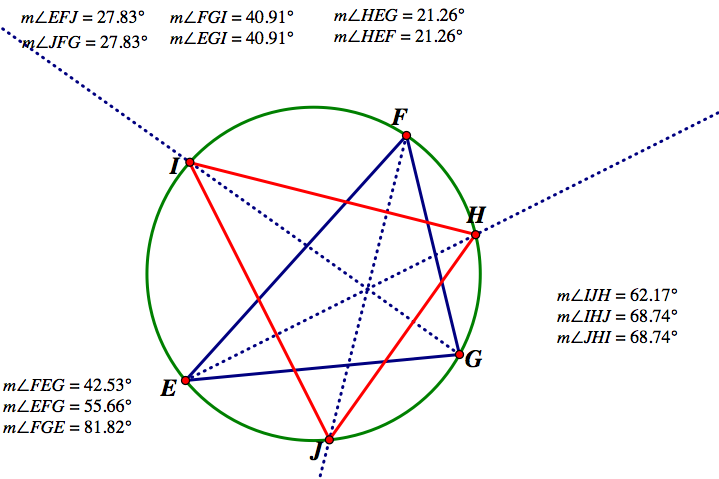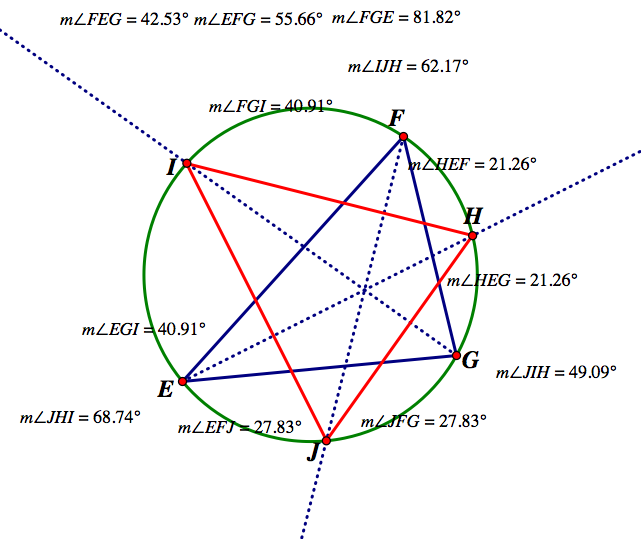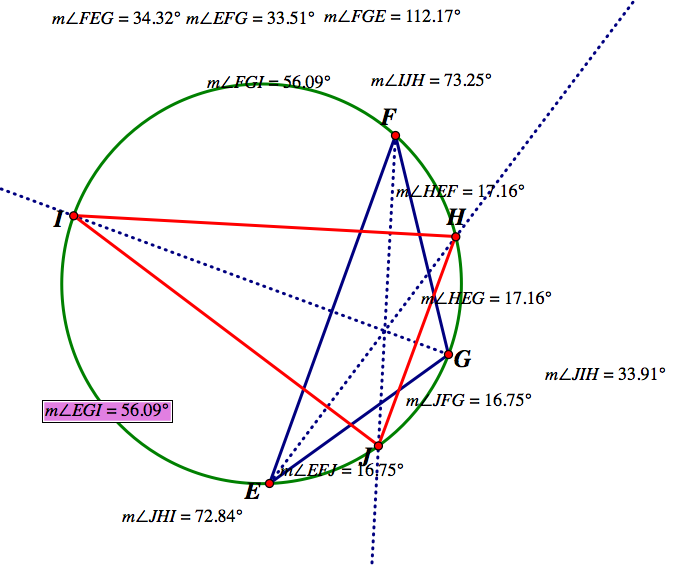

Triangle of a Triangle Angle
By: Russell Lawless
Before proceeding on reading perform the following steps:
a. Construct any triangle ABC.
b. Construct the Orthocenter H of triangle ABC.
c. Construct the Orthocenter of triangle HBC.
d. Construct the Orthocenter of triangle HAB.
e. Construct the Orthocenter of triangle HAC.
f. Construct the Circumcircles of triangles ABC, HBC, HAB, and HAC.
Your result should be similar to this: Orthocentric Systems.
This is for your own fun. We will be doing something different in this exploration.
Here is the statement and question that is proposed: The internal angle bisectors of triangle FEG are extended to meet the circumcircle at points H, I, and J, respectively. Find the angles of triangle HIJ in terms of the angles F, E, and G. Does your result hold only for only acute triangles?
The image that we will be interpretting is found below

Click here to get the image on GSP.
So where to start? When beginning this exploration I originally did not know to approach this problem either. However, after doing research and playing with this construction I found that if we focus on the idea of inscribed angles we can derive some form of an equation. For a reminder, an inscribed angle is the angle that is formed by two chords of a circle where they have a common endpoint. The common endpoint then makes the vertex of the inscribed angle. The other two endpoints create the intercepted arc which is the part of the circle inside the inscribed angle. The reason we are looking at inscribed angles is because triangle HIJ is defined by the angle bisectors of triangle FEG and the circumcircle of triangle FEG. I am viewing each leg of the triangle and the angle bisectors as chords in a circle.
So let's look at the angle measures of each angle.

Here is a lot of information that you may not know what to do with. Keep in mind that we are trying to find angles H, I, and J in respect to triangle ABC. I got every angle in order to find out if there were any combinations of angles that could add up to the desired angles. However, I could not find anything else. Could you? Let's try rearraging the location of our angles. Does this help?

We now see a pattern that might be able to help us form a formula. The reason I rearranged it this way is because of the relationship between the intercepted arc and the inscribed angle. So the formula in order to get the angles of triangle IHJ in terms of FEG is as follows:
.5 * ∠F + .5 * ∠G = ∠H
.5 * ∠F + .5 * ∠E = ∠I
.5 * ∠E + .5 * ∠G = ∠J
Does this only apply for acute angles though? Try for yourself!!!

It appears so. So it looks like our equation will hold for all triangles.